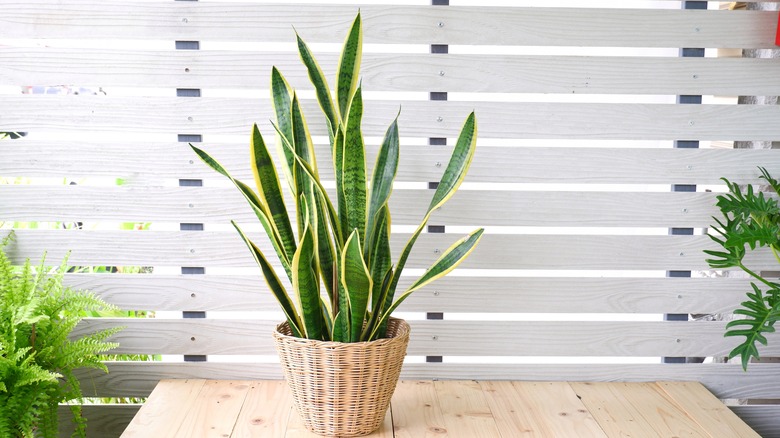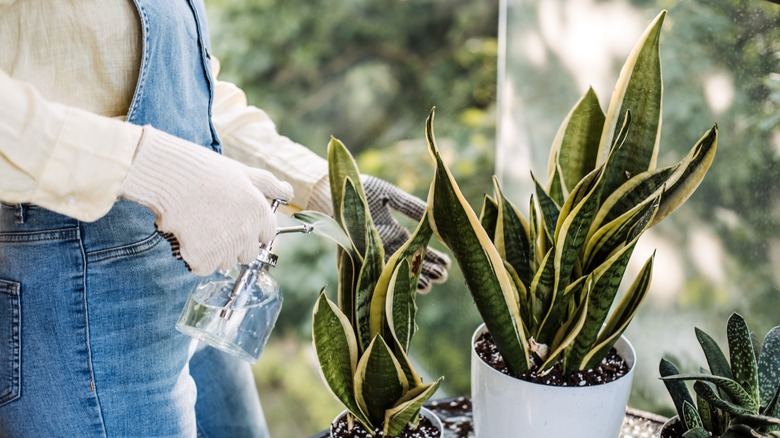The Best Way To Keep Your Snake Plant Healthy All Winter
Snake plants are an easy way to add greenery and life to your home. They're known for being low-maintenance and easy to care for, but that doesn't mean they're completely foolproof. Snake plants (Dracaena trifasciata) can't tolerate temperatures that are too low, and they can easily become overwatered, especially during the winter months. Well-draining soil is also essential because the last thing you want is for your snake plant to succumb to root rot.
While you can plant your snake plant outdoors if you live in USDA Hardiness Zone 10 or higher, for most people, it's best to keep them in containers. Then, your snake plants can spend summers outside, and you can easily make sure to move them back indoors before temperatures drop below 50 degrees Fahrenheit. Finding a spot indoors for your snake plants isn't difficult, though, since they can handle low-light conditions and grow without a ton of natural light. They aren't too picky about humidity levels either.
One thing to note is that snake plants are mildly toxic. So, you'll want to be sure to find them a spot out of reach of toddlers or pets. If you don't have a safe location for them, you may want to avoid growing a snake plant until your children are older.
Don't overwater your snake plant during winter months
Snake plants are easy to smother with love. While they require only occasional watering regardless of season, it's especially easy to overwater them during the winter. During the cold season, you should avoid watering your snake plant more than once every month or two. Try using your finger or a moisture meter to make sure the soil is fully dry before watering.
These popular indoor houseplants are succulents, so it's important to grow them in well-draining soil. When potting or repotting, use a potting mix designed for cacti and succulents since it will not hold onto water as much as a regular potting mix. Their pot should also have plenty of drainage holes in the bottom so excess water can run out. While this is important year-round, the snake plants' slower growth during winter makes it especially imperative to keep in mind, so that the roots are not sitting in water.
When winter begins to wane and you're ready to move your snake plant outdoors to its summer home, be sure to harden it off first. This is a gradual process of exposing the plant to outside temperatures to avoid accidentally shocking it or scorching its leaves. That way, you can have your plant stay healthy indoors or outdoors.

